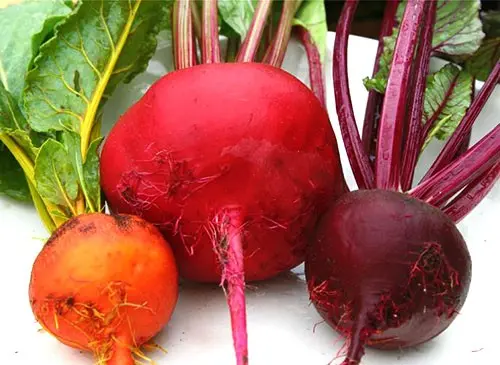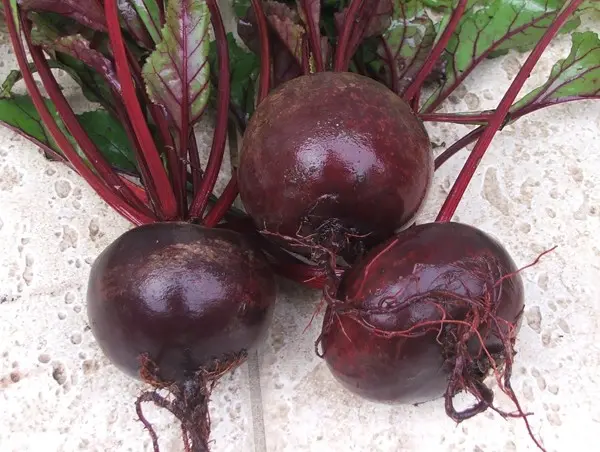Contents
Beets are one of the most common crops in the middle lane and Siberia. Its roots are used for cooking, sugar production, and pet food. It is also customary to eat beet tops. For each purpose, there are varieties of seeds that are most suitable for the required criteria. Below we will present you the best varieties of beets and tell you what the cardinal differences between them are.
Types of varieties and their differences
When choosing seeds, you need to pay attention not only to the variety, but also to the type of root crop. There are 3 main varieties of beets – sugar, table and fodder. There is also leaf beet, which is most often grown in central Europe. Lump beets differ from their counterparts in their impressive size and high fiber content. It does not differ in taste, therefore it is customary to grow it only for fattening livestock. The shape of the fodder root crop can be round, oval or conical. Shades range from light yellow to pink and burgundy.

An abundance of varieties can boast of table beets. It is grown both commercially and for home use. Table root crops have a weighty single root. By color, they are pink, light burgundy, wine-burgundy. A good table beet should have a juicy and elastic pulp without fibers and hard veins. It is sweet in taste. Swiss chard is a biennial plant that produces abundant tops. The leaves contain many useful substances. The stems taste like spinach.
Sugar beet is white in color and has an elongated conical shape. It is grown for the production of sugar, since the content of this element in it can reach up to 23%. Sugar beet grows best in southern regions with fertile soils. In Siberia, the yield of this crop is somewhat lower with a lower sugar content.
Feed
One of the most popular is Eckendorf Yellow. Cylindrical roots grow from seeds. The roots are not strongly developed, so pulling ripe beets out of the ground is easy. The tops are smooth and semi-erect with dark green leaves. The pulp is juicy and white. From 1 hectare you can harvest up to 970 centners of the crop.

Arnimkrivenskaya – is considered the most fruitful. A ripe root crop has a cylindrical shape and peeps out of the ground by ¾. The preservation is good. The aerial part of the root crop is colored gray-green. At the bottom, the beets have a light shade. Sutton has a rounded shape and gray-yellow color. The pulp is juicy and uniform. There are practically no small lateral roots, so root crops are easy to clean.
Vorriak has a developed root system. Large plants with developed tops grow from seeds. The variety is afraid of frost. During autumn frosts, the tops die. In winter, root crops are stored well. For the conditions of Siberia, it is best to purchase seeds of the Northern Orange variety.
Video “Variety Pablo”
Sugar
If you are looking for the best beet varieties with a high sugar content, then we suggest that you pay attention to the following options. Detroit is suitable for cultivation in the central region. The root crop has a rounded shape with a short root. The flesh is colored dark red. The average weight of one fruit is about 110 grams. The sugar content fluctuates at the level of 12-14%. The main advantages are keeping quality, marketability, stable yield.
Bohemia is distinguished by large fruits of rich burgundy color. Root crops weighing up to 500 grams can grow from seeds. Bohemia refers to mid-season varieties. The crop is harvested within 70-80 days after germination. The culture loves fertile soils with a neutral pH.

Bona is valued for its consistently high yield. From 1 square meter of planting, you can collect about 6 kilograms of beets. Root crops grow round, medium in size with soft and uniform pulp. Variety Larka yields up to 600 centners per 1 hectare. Root crops are adapted for mechanized assembly. Beets can be stored for a long time. Root crops grow up to 300 grams.
Sheet
Leaf beet is not very common in our country, although this culture is distinguished by the content of a large number of useful micro and macro elements. Varieties of leaf beet are distinguished by the color and structure of the leaves. They can be light green or dark green. The color of the stems also varies from white, yellow and orange to pink and burgundy. The leaves are smooth and even or curly.
Culture loves well-lit beds and plenty of moisture. During the season, gardeners harvest 2 crops. In Europe, such beets are called chard. In garden stores, you can find seeds of the following varieties of chard: Rhubarb Chard, White Silver, Pink Passion, Lucullus, Bright Lights.
The most productive
It doesn’t matter if we sow beet seeds for our own use or if they are seeds for sale, in any case, it is important for us to get a good harvest. The following varieties showed their best performance according to this criterion. The early variety Podzimnaya A-474 speaks for itself. Seeds are sown at the end of autumn and in the spring they receive about 6,5 kilograms of juicy and fresh root crops from 1 square meter.

Bordeaux 237 gives up to 8 kilograms of root crops from 1 square meter of land. Beetroot has a rich and deep color, as well as juicy and sugary pulp. Bordeaux One-seeded is valued for economy in crops and for the absence of the need to thin out the planting. The variety has excellent keeping quality. Up to 1 kilograms of crops are harvested from 6 square meter.
Of the late-ripening varieties, Cylinder stands out. By the name you can understand what shape the root crops have. Beets grow up to 20 centimeters deep and up to 7 centimeters in diameter. Thus, the yield is ensured by compact placement in the garden. The cylinder has a rich dark burgundy color and sweet flesh without distinct rings.
The choice of seeds is important, but it is equally important to create the necessary conditions for the culture to grow. This plant loves moisture, sun and warmth. For good yields, weed growth also needs to be controlled. Otherwise, even the most productive variety will not please with a good result.
Video “All about beets”
This video provides a brief description of this vegetable and seeds, its features and an overview of varieties.









